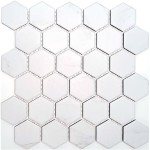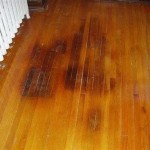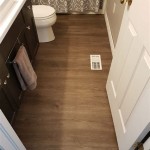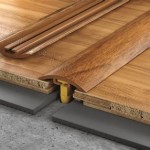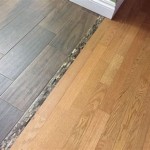Laminate flooring has become increasingly popular over the years as a durable, stylish and cost-effective flooring option. Although it’s a great choice for any home, laminate flooring can sometimes suffer damage due to wear and tear or accidental spills. Knowing how to repair laminate flooring can help you extend the life of your floors and keep them looking great.
What to Know Before Repairing Laminate Flooring
Before attempting any laminate floor repair, it’s important to know the type of floor you have. Different types of laminate flooring require different types of repair. For example, if your floor is a floating laminate floor, it may require special glue or a sealant. If you’re unsure of the type of flooring you have, it’s best to consult with a professional to help you choose the right repair products.
In addition, it’s important to know the manufacturer’s warranty on your floors. Many companies offer warranties on their laminate flooring, and if your floor is still covered under the warranty, you may be able to get repairs or replacements at no additional cost.
Tips for Repairing Laminate Flooring
Once you’ve assessed the type of flooring you have and determined whether or not it is still covered under warranty, you can begin the repair process. Here are some tips for repairing laminate flooring:
- Clean the area before attempting any repairs. Dirt, debris, and dust can affect how well the repair holds, so it’s important to make sure the area is completely clean before you begin.
- Make sure you have the right tools and materials. Depending on the type of repair you need to do, you may need a variety of tools and materials, such as glue, sealant, putty knives, and sandpaper. It’s important to make sure you have everything you need before you begin.
- Smaller repairs are easier. If your laminate flooring has sustained damage, it’s best to repair the damage as soon as possible. Smaller repairs are easier to complete and will take less time and effort than larger repairs.
- Use caution when using glue and sealants. When using glue or sealants to repair laminate flooring, it’s important to make sure the product you are using is suitable for the type of flooring you have. It’s also important to read and follow the instructions carefully to ensure a successful repair.
Common Laminate Flooring Repairs
Laminate flooring can suffer from a variety of damage, from scratches and chips to water damage and loose planks. Here are some of the most common laminate flooring repairs:
- Scratches and chips: Smaller scratches and chips can often be repaired with a putty knife and a laminate floor repair kit. These kits include a putty knife and special putty that can be used to fill in the scratch or chip.
- Water damage: Water damage can cause the laminate flooring to swell and warp. If the damage is minimal, you can often repair it with a laminate floor repair kit. However, if the damage is more extensive, it may be necessary to replace the affected planks.
- Loose planks: If a plank has come loose, it may be possible to reattach it with a special glue or sealant. It’s important to make sure the surrounding planks are completely clean before reattaching the loose plank.
When to Call a Professional
Laminate floor repairs can often be completed on your own with the right tools and materials. However, if the damage is extensive or if you are not comfortable performing the repair yourself, it’s best to call a professional. Professional flooring contractors can assess the damage and provide the best solution for your specific situation.
Conclusion
Knowing how to repair laminate flooring can help you extend the life of your floors and keep them looking great. With the right tools and materials, you can often perform simple repairs on your own. However, if the damage is extensive, it’s best to call a professional for help.















Related Posts

